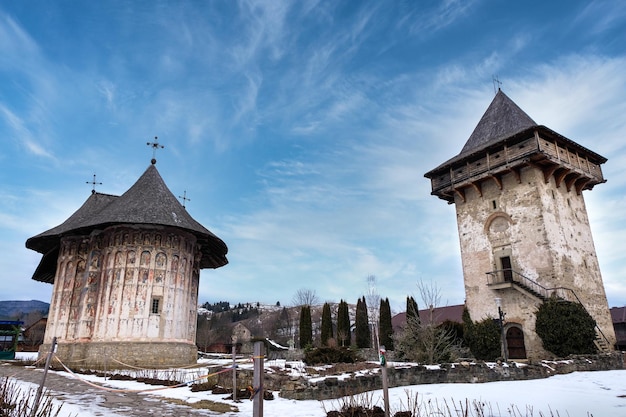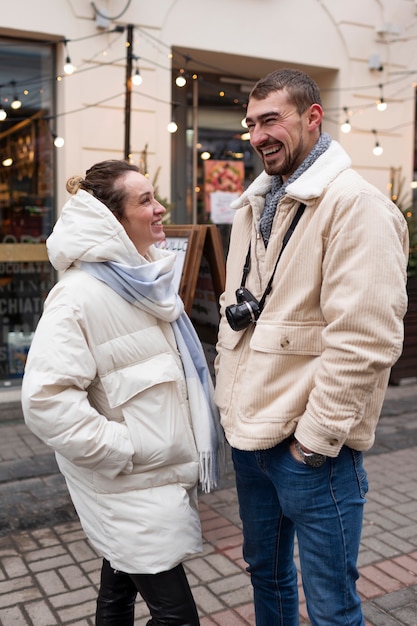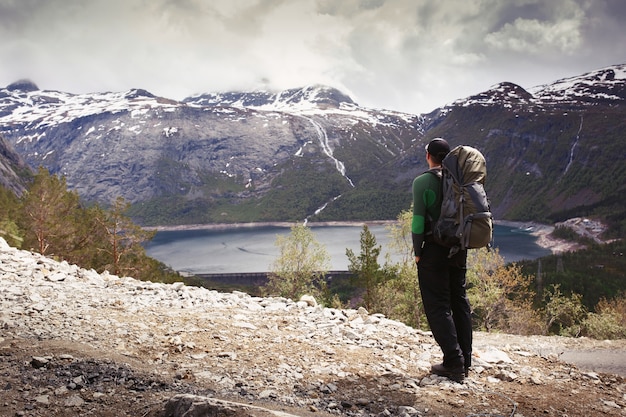
The Meteora monasteries are unlike anything else. During my recent visit, I was absolutely amazed by their beauty. In this article, you’ll learn about their history, how to visit them, and more.
Nature is like an artist, taking millions of years to create landscapes with delicate strokes. However, the Meteora monasteries seem to be an exception, with their dramatic vertical formations that look almost otherworldly. The area is dotted with towering sandstone and conglomerate boulders that were once part of a delta seabed. Some monasteries are so tightly perched on these pillars that they seem like extensions of the rock itself.
A handful of monks began scaling these columns in the early 14th century, ultimately building over 20 monasteries atop the jagged peaks. Today, Meteora is a must-see destination in Greece for all types of travelers.
You can travel to Meteora from Athens by train or bus. The express train departs from Athens’ central station (Larissa Station) at 7:20 AM and takes about four hours, costing between €20 and €40. Alternatively, five buses leave daily from Athens’ Liossion Bus Station, costing €29 one-way or €49 for a return trip, and taking around five hours.
From Thessaloniki, you can get to Meteora by train or bus with a transfer at Trikala. The train ride takes 2.5 to 3 hours and costs between €15 and €25. The bus takes approximately 3.5 hours and costs €22.
Kalambaka and Kastraki are the two towns near Meteora where you can stay. Kalambaka has numerous hotels and restaurants and is conveniently accessible by train and bus. Hotel Doupiani House offers stunning views of Meteora. Kastraki is a smaller, serene village perfect for hikers, with prices for accommodation ranging from €40 to €100. Pyrgos Adrachti hotel provides breathtaking views.
To explore Meteora thoroughly, plan to spend at least two days. You can hike, join organized tours, or use rental cars, taxis, or the local public bus. Special tours, including sunset trips and rock climbing, are also available.
There are currently six monasteries open to the public, each with a €3 entrance fee (kids under 12 are free). While visiting, adhere to clothing rules, especially for women who must wear long skirts. Specific areas of the monasteries are off-limits as they are reserved for monks.
The Great Meteoron Monastery, built in the 14th century, initiated a new era of monasticism in the area. It houses a significant library and a museum dedicated to modern Greek history. Varlaam Monastery, founded by hermit Varlaam and later expanded by two brothers in 1518, features a 16th-century oak barrel used for water storage.
St. Stephen’s Nunnery is notable for its accessibility via a small bridge, contrasting beautifully against the Greek sky. The Holy Trinity Monastery, although challenging to reach, rewards visitors with incredible panoramas and photo opportunities.
The Monastery of St. Nikolaos Anapafsas is famous for its frescoes by Cretan artist Theophanes. Roussanou Monastery, established on an impressive pillar, offers picturesque views, especially at sunset.
Other notable sites include Saint Antonios, Saint Nikolaos Pantovas, and Ipapanti, which are hidden within rock cavities and sketes dating back to the 10th century. These hermits lived in isolation, emerging only once a week for communal mass and a proper meal.
By the 16th century, 24 monasteries were built, each requiring treacherous logistics. Over time, stairs were carved into the rocks, making them more accessible to visitors. The first significant outsider to document Meteora was Swiss photographer Frederic Boissonnas in 1930, followed by its feature in a James Bond movie in 1981.
Meteora has remained relatively untouched by tourism growth, maintaining its serene and spiritual atmosphere. It is also a popular destination for rock climbing and photography, offering stunning images throughout the year.
Visiting Meteora is an incredible way to immerse yourself in a place that has preserved its monastic way of life for over a thousand years. The Great Meteoron Monastery even has a bone chamber exhibiting the skulls of monks who lived and died there, emphasizing their deep connection to this unique and secluded landscape.
Overall, Meteora is a living relic, a testament to a way of life that has stood the test of time.




